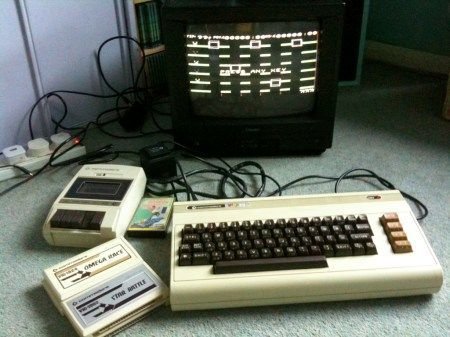
Recent escapades with my 11-year-old daughter have caused me to reflect back on my life at that same age.
I think back to the summer I spent mowing yards so I could earn enough money to buy a Commodore VIC-20 computer. It set me back $200 but it was worth every penny for such cutting edge technology, featuring a full 5 kilobytes of RAM.
Some of you younger readers may be wondering what a kilobyte is since all you have ever heard of with regard to computer memory is the term gigabyte or, for those a little older, a megabyte. Well, let me explain. A kilobyte was pretty much all you could measure memory with in 1982 and it is about one one-thousandth of a megabyte. Getting to a gigabyte takes over one million kilobytes.
You think that is amazing? Get this.
The VIC-20 had no hard drive. This was even before the more common use of 5 ¼” floppy disks. I had to buy a tape drive which used cassette tapes to record any programming I did. And just for kicks, I would play them in my sister’s boom box to listen to the fax-like sounds that represented my hours of effort entering basic language code.
Before we go on, if you are asking yourself what’s a floppy disk, a cassette tape or boom box, please, dear Millennial, slowly place the newspaper in your mother or father’s hands and return to the blissful ignorance and comfort of your smart phone which, by the way, has a processor about 1400 times more powerful than my old VIC-20.
But that didn’t stop me from savoring every drop of processing power back then. I subscribed to game magazines which included pages of video game programming in basic language that you could enter yourself and, after spending hours or days resolving the dreaded “Syntax Error” (aka typos), you could play the likes of Crazy Climber, Frogger and a zillion other games if you were willing to take the time to enter them and had an extra cassette tape to store them on.
I remember vividly when I unboxed my new VIC-20. Pop helped me connect it to the TV and I cranked it up, wildly excited to see this 16-color behemoth of computing power fill my TV screen with incomparable pixelated beauty. I was introduced to the color cyan by way of the default color scheme, and the cursor blinked on my screen below the indication that I had “3,583 BYTES FREE.” I had no idea what that meant at the time but it sure sounded impressive.
Reading through the manual diligently, I began entering the first program in the book designed to introduce me to the basic programming language and show off the power of the first home computer to ever sell a million units. I typed for hours. Entering my name between quotations as instructed, I could barely contain my anticipation as I waited to finish the final line and type R-U-N to execute the program.
After the required Easter egg hunt for syntax errors, I finally completed the entire program and stood ready to press “Enter” and see the labors of my hard work. I excitedly dragged my parents and siblings into the room to show off my first effort at programming. I had no clue what we were about to see but I felt certain it would be a marvel long spoken of at the dinner table, family reunions, church gatherings and so on.
With my captive audience in place, I pressed “Enter.” Immediately my name popped up in the upper left corner of the screen and slowly began to descend down and to the right until it reached the lower right corner of the screen. The screen then cleared and I was left with my blinking cursor again.
“That’s it?!” I exclaimed. “Just my name moving down the screen?” My parents encouraged me, pointing out that it was a great first effort.
Frankly, I was pretty frustrated. That result was not at all worth the hours I had just spent abusing my fingertips on the fresh new keyboard. But I persevered and eventually keyed literally hundreds of thousands of rows of code into that beloved computer before I graduated up to the Commodore 64 a few years later.
Fast forward to today, and my own 11-year-old and I can be spotted on weekends sitting through an online Java class for kids, teaching us how to make Modifications (Mods) to Minecraft code in Java language, which has some memory-sparking similarities to the basic language I used 34 years ago.
My daughter was amazed and impressed as, long before the instructor indicated it was a problem, I pointed out what would result in a syntax error due to an omitted quotation mark. Score one for dad as my mini me stared in amazement that I knew something about programming without having even sat through the first class.
We are both really enjoying our time together and she is embracing the class, making sure she continues to make perfect scores on each quiz. The class consists of 12 one-hour courses and promises that, upon completion, the student will be able to make significant modifications to their own Minecraft software. Students with a high enough score will also receive a pre-designed mod for a sword that can summon lightning. I feel sure she will get that reward.
Mine will come in the form of memories. Both ones revisited and those newly created.
If you enjoyed this column and would like to see more, click here.
© Michael L. Collins
Originally appeared in Macrh 9, 2016 edition of The Mountain Press (http://www.themountainpress.com) under the name Loading father, daughter memories one class at a time.
Hi! I am a robot. I just upvoted you! I found similar content that readers might be interested in:
https://michaellcollins.net/2016/03/17/vic-20-minecraft-and-memories/